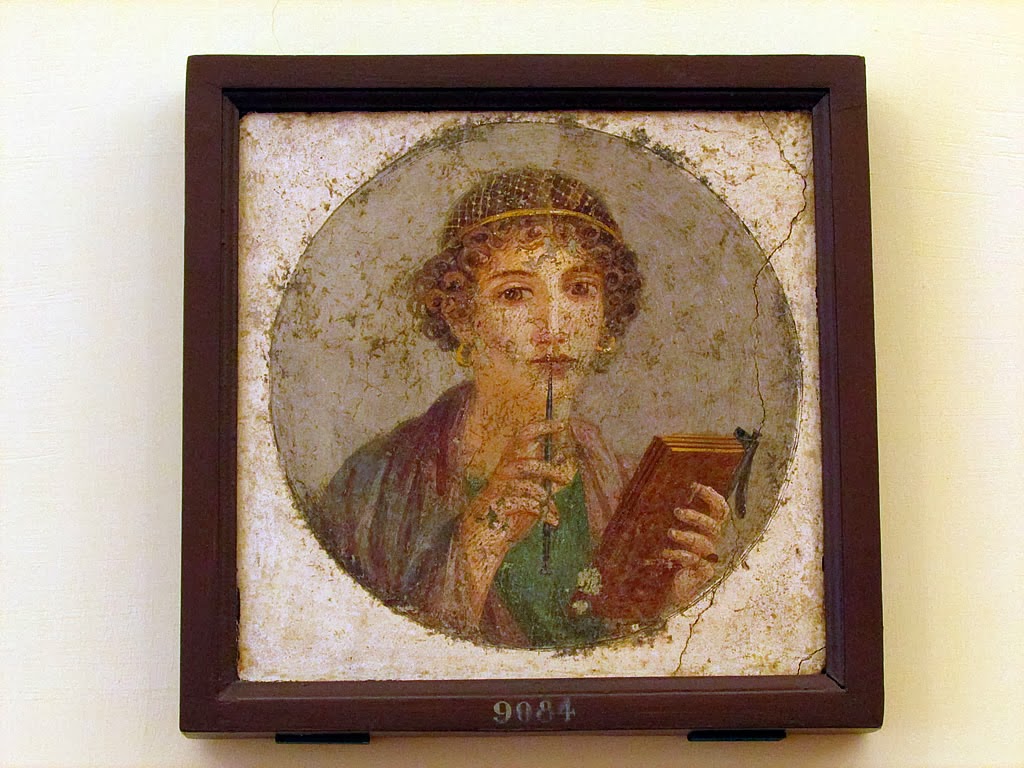We should have taken along our compass, everything looks so easy in google maps until we were on the street and didn’t know which direction we should really be going, as we never saw street signs. Somehow or another, we tend to have a sense of direction and got ourselves turned in the correct direction and made our way to the Naples Archaeological Museum.
What a museum it is, there is an entire section on Pompeii. Many of the most important artifacts from Pompeii are in the museum. The building itself is beautiful with marble floors and huge windows. There is also a lot of wonderful sculpture. One really has to know mythology to be able to interpret a lot of the wall paintings and sculpture as the Romans evoked myth in their painting and copied Greek sculpture.
We are not knowledgeable at all when it comes to myth, sculpture and painting. We only know the four styles of Roman wall painting because of our study of Pompeii and Herculaneum. Italy overwhelms, there is just too much. Therefore, we had to decide early on what to focus on and we decided to concentrate on Roman architecture and archaeology, which led to Greek temple architecture as that is where it all started here in the south of Italy. Nevertheless, we were taken with the sculpture as we have never seen anything like it before.
Mosaics
We may as well start with an astounding example of a mosaic made with tesserae, which is tiny stone. This is the famous ‘Alexander exedra’ from the floor of the tablinium in the House of the Faun in Pompeii. There is a copy in the house in Pompeii right now and the original is on the wall in the museum. It is thought to be a copy of an earlier Greek painting that was lost, painted ~ 300 BC. The mosaic depicts the battle of Alexander the Great (Hellenic King) and the Persian King Darius, at the Battle of Issus, where Alexander defeated Darius.
Darius, in his chariot, is in retreat. His horse is wheeling around to flee but both Darius and his horse are looking at Alexander with fear in their eyes. The soldier on the ground can see his own face reflected in his shield. The detail of Alexander's hair is extraordinary when you consider this is made of tiny stones.
Mosaics
Painting from Pompeii, Woman with a Stylus, Middle of 1st Century AD
Farnese Collection of Sculpture
The Farnese Bull was situated in the Baths of Caracalla in Rome, it is a copy of a sculpture from the Greek island of Rhodes. This was sculpted out of a single block of marble. It depicts the myth of Zetos and Amphion, sons of Antiope, tying Dirce to the horns of a raging bull in revenge for the cruelty Dirce inflicted on their mother. The Roman copyist added the boy and the wild animals.
Also from the Baths of Caracalla, a Roman copy of the Greek sculpture of Hercules at Rest. The muscle detail is outstanding and there is a look of exhaustion on his face.
Venus, a Roman copy of a Greek original.
Athena
Athena, from the Villa of Papyri near Herculaneum
The Satyrs are associated with Pan, who is half goat, half human.
Sleeping Satyr
Drunken Satyr
Hall of the Roman Emperors
















Oh, I am speechless.
ReplyDeleteastounding! how did it feel to look at something that was made in the 1st century? wow....amazing! Tracy
ReplyDeleteThere is so much to see in this museum, so many wonderful pieces of sculpture, Roman wall painting from Pompeii, all manner of household items from Pompeii, exquisite gems from the Farnese collection and we did not even visit the Egyptian section. I think we were more astounded than is the norm because we had no exposure to these types of works prior to our visit, which is great, we picked a superb museum to have this first experience. We are not even thinking about seeking out paintings, even though Naples is the home to a museum full of wonderful paintings, we would need to study art history first.
ReplyDelete